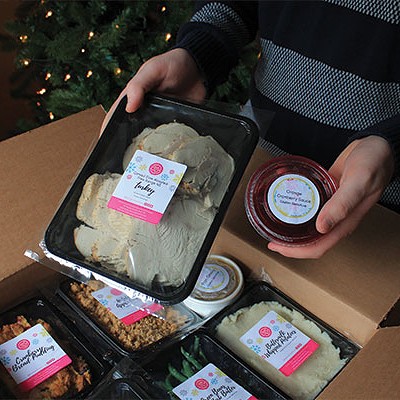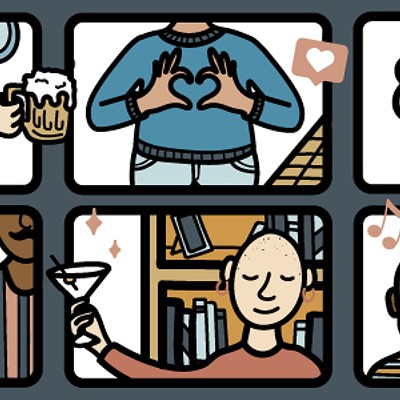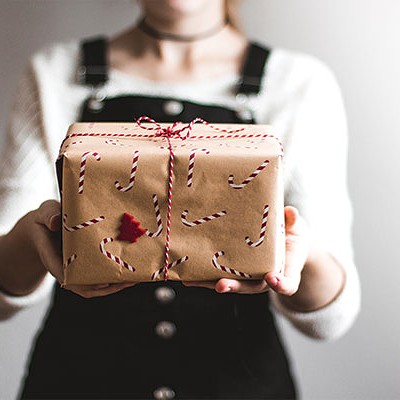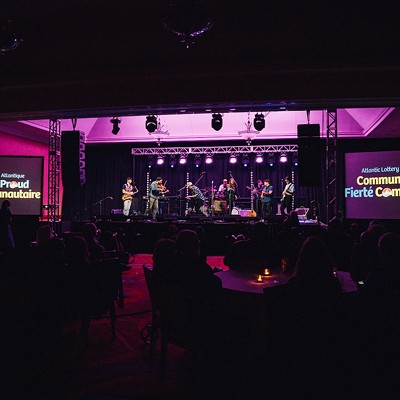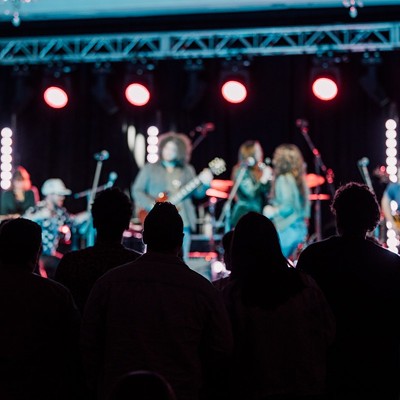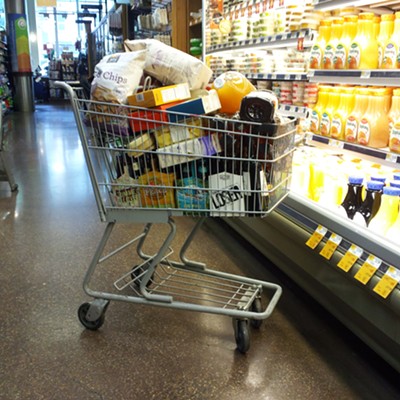Nova Scotia is home to 30,000 acres of sweet-smelling balsam firs and pines, some ready to be harvested for the holiday season. In 1996, Lunenburg was designated the world’s balsam fir capital because it produces more fir trees than anywhere else, and Nova Scotia trails just behind Quebec as the country’s biggest overall Christmas tree supplier. Our province is also, fittingly, the locale of Jason Eisener’s popular horror short Treevenge, where sweet trees turn into not-so-sweet killers Christmas morning and take revenge on the humans who cut them down.
Haligonians probably needn’t worry about vengeful Christmas trees this year. But how do you choose between organic, non-organic and artificial? Thirty-thousand acres and many an artificial-tree retailer will give you a lot to think about.
To start simply, you can’t just pull over on the side of the highway and cut down a tree.
“That’s considered theft,” says Ross Pentz, a Christmas tree specialist with the Nova Scotia Department of Natural Resources and the Christmas Tree Council of Nova Scotia, a local association of tree growers.
“The Christmas Tree Council and the Lunenburg County Association offer a reward of $200 for information leading to the conviction of people stealing trees,” he adds sternly.
The good news is there are more and more choose-and-cut operations in the province, sort of like an apple U-pick, where you pay to cut down a tree right on the grower’s farm. It’s a nice, legal way to become more involved in the tree-choosing process than simply pointing out a tree in a city parking lot. In both cases, though, you’ll have to make a decision whether or not you want an organically grown tree.
“Although our growers aren’t necessarily certified, most of the Christmas trees in this area are grown organically,” says Pentz, adding that 98 percent of Christmas trees in the province are naturally regenerated, while the other two percent are first grown on a plantation and then replanted.
Most of the tree-farm area is land that’s been logged for timber and naturally grows back with balsam firs. Farmers cultivate the trees that grow naturally by trimming them, spacing them and pruning them.
“We depend mostly on natural controls,” says Pentz, citing that he’s been growing trees for 25 years and hasn’t used an insecticide yet. He and other farmers use natural insect-predator control and put up birdhouses, using nature to control nature. Pentz says the time when growers do use pesticides---and he says this is rarely---is when there are major infestations.
If you do want an organically certified Christmas tree, there is one man in the area who can provide it: Kevin Veinotte. His family owns the only farm that has certified organic trees in eastern Canada, and is located in the LaHave River Valley. Veinotte is the seventh generation in his family to farm Christmas trees: About 20 of his 420 acres are dedicated to certified organic trees.
When asked about the process to getting certified, Veinotte says it was fairly easy. He says what turns farmers off it most times is not the initial certification process, but the effort and expense of growing organic trees over time. Veinotte adds that growing a tree organically adds three or four years to the 10-12 years it takes to grow one with chemical help.
“Right off the bat it sends some guys in the opposite direction,” he says.
Veinotte is providing the trees for this year’s Ecology Action Centre organic Christmas tree sale. It’s a program that’s been running for almost 20 years and provides about 400 organic trees to Haligonians each holiday season. You can also buy chemical-free (not organic) wreaths. To guarantee a tree (going for $35), you have to order from the EAC by December 6 and tree pickup is December 13 at the Bloomfield Centre.
The downside to the EAC’s program is the pickup---if you don’t live within tree-dragging distance of Bloomfield, or don’t have access to a car, you can’t take their trees home.
“There’s a community-building aspect we really like with the pickup of the trees,” says Charlene Boyce Young, outreach and development co-ordinator for the EAC, who says it’s just not logistically possible for the centre to deliver trees throughout the city.
If the real-tree thing isn’t for you---whether you’re allergic, aren’t allowed or just don’t want one---an artificial tree is what’s left. Boyce Young suggests looking for a durable tree that can go up and down without too much difficulty. If you’re allergic to the balsam fir, Pentz suggests going a different route.
“What people will do is if they’re allergic to the balsam fir, they can use the pine and it’s generally not a problem for them,” he says.
But as far as weighing in whether or not an artificial or naturally grown tree is better for the environment, “a real tree is the way to go,” says Pentz. They filter the air, house wildlife and provide a way of life for tree growers in Nova Scotia. In the case of artificial trees, they’re normally manufactured somewhere overseas---greatly increasing pollution due to transportation---and are mostly made with toxic petroleum-based products. Real trees can be composted, while artificial ones can’t be recycled. While you’d be reusing a product year after year with an artificial tree, you’d be supporting the local economy and helping the environment by choosing to cut the living, breathing one.
And while the trees in Treevenge may have a problem with that, you can rest assured your chosen tree will stay motionless in its stand come Christmas morning.


